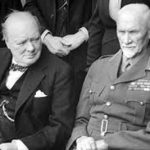I know that many people who should know better write the above name as Hapsburg. I am not among them, perhaps because I am a retired journalist, not a working one, and it is mostly journalists in Sunday Supplements who make this cardinal error. If you wish to avoid using either ‘b’ or ‘p’ you could call them The House of Austria . . . but that does not prevent them from being the most prominent, some would say enduring royal dynasty in history.
Habsburgs were royally installed on thrones from the 15th to the 20th centuries. The name itself comes from Habichtsburg (Hawk’s Castle) which actually is in Switzerland, not Austria, and has been since 1020.
The family’s founder was Rudolph or Rudolf I, self-styled King of the Romans, who conquered both Austria and Styria. In 1282 he gave these lands to his two sons, starting the family’s rule over Austria. Frederick V, the Habsburg king of Germany from 1440 was crowned Holy Roman Emperor (as Frederick III) in 1452. Habsburg domination of most of the rest of Europe was established by the marriage of Maximilian I in the middle of the 15th century: this Habsburg brilliantly married the right girl and brought the Netherlands, Luxembourg and Burgundy to this rising family. Things got even better when his son Philip brought Castilia, Aragon and the Spanish New World possessions to the Habsburgs by his marriage.
Before long they absorbed Naples, Sicily and Sardinia, and ruled Hungary and Bohemia as well, from 1586 to 1918. The apogee of Habsburg power, however, came under Charles I, King of Spain and Emperor Charles V, in the 16th century.
After Charles I & V died, his brother Ferdinand or Fernando ruled Germany and Austria, while his son Philip or Felipe II ruled the entire Spanish inheritance, which included multiple possessions in the Americas and Caribbean. This was the Philip who first married Mary Tudor (q.v.), abandoned her, built The Escurial outside Madrid, and sent two or three Grand Armadas to invade England. He was a clever Habsburg, but he failed with Mary of England, and Elizabeth I too.
Things began to go badly wrong for the family during the Thirty Years War (1618 – 48), with the Turkish invasion of Eastern Europe plus the Protestant Reformation forcing both branches of the family to combine in the fight to preserve Roman Catholicism. The long conflict helped to weaken the Habsburgs, but they managed to snare Portugal anyway, as recompense.
The Spanish line became extinct in 1700 and in the succeeding War of the Spanish Succession (q.v. 1703 – 13) the Spanish inheritance passed to the Bourbons though the Spanish changed the name to Borbón.
Around 1740 the Austrian Habsburgs called themselves the House of Habsburg-Lorraine. They regained strength under María-Theresa (1717 – 80), and her son Joseph II (1741 – 90), but they ended the Napoleonic Wars with the loss of the Austrian Netherlands, and the title of the Holy Roman Empire, though they continued to rule Austria. Prussia was rising like an ogre and the Habsburgs tried to contain them, causing the Austro-Prussian War of 1866, after which they were forced to make concessions to Hungarian nationalism by forming the Austro-Hungarian Empire.
Emperor Franz-Josef clashed with Russian ambition in the Balkans, relying more and more on the German Second Empire, with whom he formed an alliance in 1879. Most historians consider this a bad career move for the Habsburgs, because nationalist aspirations led inevitably to the disintegration of Franz-Josef’s empire after the colossal clash of the First World War. The last Habsburg monarch, Emperor Charles I of Austria renounced his title in 1918 (he had no choice) and was very soon deposed.










Leave A Comment